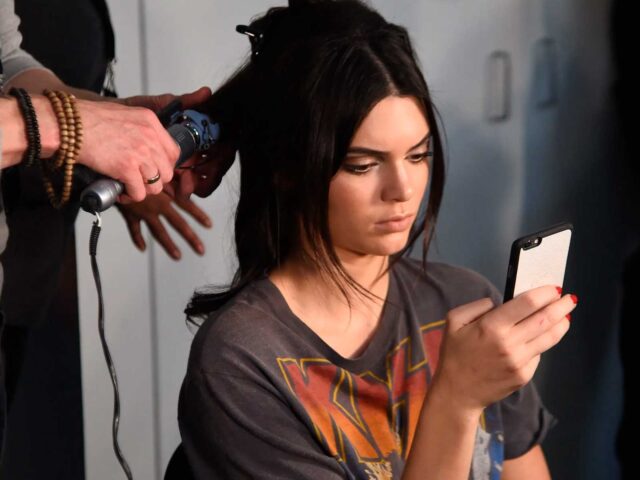Gallery owners, museum directors, private collectors, disseminators, cultural managers and patrons form a substantial part of the artistic ecosystem in our country. Without them, perhaps there would be art (because creativity is a human compulsion that makes its way even in the worst circumstances), but there would be no public, no market and no scene.
Lluís Bassat
Collector, President of the Carmen & Lluís Bassat Contemporary Art Foundation
The Barcelona-born publicist has a collection of more than 2,500 paintings and around 500 sculptures, focusing on the styles that interest him most (preferably surrealism, contemporary realism and abstract avant-garde). It is said that he made his collecting debut after giving in to an irresistible impulse: one afternoon in 1973, after leaving work, he went to the Sant Adrià gallery in Barcelona and ended up buying in one go more than a third of the works exhibited on its walls. Since then, he has continued to collect with relish and with criteria in the company of his wife Carmen, who is as enthusiastic about art as he is. Among his favourite pieces are two sculptures by Miró, a pair of Picassos, a Barceló, a Chillida and the pair of banknotes signed by Andy Warhol.
Lola Martínez Rivero y César Jiménez
Owners of the Jiménez Rivero Collection
This married couple of businessmen, collectors and patrons have been managing the Casa de Indias project for five years, a free exhibition space and residency for contemporary artists based in the former premises of the Pedro Muñoz seca Foundation in the town of El Puerto de Santa María, Cadiz. Artists such as the Tarragona painter and sculptor Iván Forcadell, the Basque multiformat artist Uxue Ruiz de Arkaute, the pair of illustrators and painters Los Bravú and the sculptor Salim Malla from Vitoria have all worked at this new patronage centre. Among the activities organised by the centre is a painting market designed to give the maximum possible visibility to the artists of the city.
Helga de Alvear
Collector, founder of the Helga de Alvear gallery
Born in Germany in 1936, but a resident of Spain since she married the Cordoban architect Jaime de Alvear at the age of 21, this professional with close ties to the Madrid avant-garde group El Paso worked for decades at the Juana Mordó gallery until she eventually set up on her own. At the same time, she has an art collection of over a thousand pieces and manages, through her Foundation, the Museo de Arte Contemporáneo de Cáceres (Museum of Contemporary Art of Cáceres). Throughout his career he has received awards and distinctions such as the Gold Medal for Merit in the Fine Arts awarded by the Ministry of Culture and the International Medal for the Arts from the Community of Madrid.
Lluciá Homs
Gallery owner and manager, director of Talking Galleries and the Salvat Foundation
An exhibition curator, gallery owner, manager and cultural consultant with over 25 years’ experience, Homs is a man of many interests who lives between London and Barcelona and coordinates a wide range of projects, such as the digital magazine Hänsel* i Gretel, the LOOP video art festival and the Talking Galleries corporate exchange platform. He also directs the Salvat Foundation for the promotion of patronage and writes about trends in contemporary art for the newspaper La Vanguardia. Homs describes himself as a gallerist “almost by biological imperative”, as he grew up in the back room of the gallery founded by his father in the 1970s. It was there that he began to develop the pair of qualities he considers essential to make his way in his profession: “A trained eye and mind and an almost carnal instinct for selling”.
Victoria Solano
Gallerist, director of Carlier / Gebauer
For just over three years now, the prestigious Berlin gallery Carlier / Gebauer has had a branch in Madrid’s Chamberí neighbourhood, on Calle José de Marañón. It has been run by Victoria Solano, a young and enthusiastic professional, committed to promoting the work of artists such as Luis Gordillo and convinced that art collecting does not have to be the private preserve of investors and multimillionaires. Solano also believes that the art scene in Madrid is going through a very sweet moment, partly as a consequence of the arrival of collectors from Latin America.
Ella Fontanals-Cisneros
Collector, president of the Cisneros Fontanals-Cisneros Art Foundation
A philanthropist, businesswoman and collector born in Cuba in 1944, Fontanals-Cisneros has spent much of her life living in Venezuela, but has a very close relationship with Spain and its art scene. In 2018 she reached an agreement with the Spanish state to donate 3,000 pieces from her collection of Latin American art, which will be exhibited in a new space integrated into Madrid’s former Tabacalera cultural centre. The art collection will include some of the most outstanding works that this pioneer began to collect in the 1970s, a period in which her interests were mainly focused on abstract art produced in Latin America.
Nerea Pérez de las Heras
Journalist, dircom of the Marlborough Gallery
Journalist, humorist and author of essays such as Feminismo para torpes, this 41-year-old Madrid native contributes to promoting the national art scene in her role as communications director of one of the country’s most restless galleries. The Marlborough, on Calle de Orfila, buys, sells and exhibits paintings and sculpture from the 19th and 20th centuries. With a degree in Art History, this professional of multi-format cultural agitation has ended up returning to the fold, and now promotes the contemporary avant-garde with the same gracefulness, naturalness and lack of prejudice with which she has always taken journalism, humour or activism.
Fernando Masaveu Herrero
Collector, President of the María Cristina Masaveu Foundation
Born in Oviedo in 1966, the heir to the Masaveu saga, a lineage of Asturian businessmen originally associated with the textile trade, has for years managed and administered one of the most important private art collections in Spain, with an estimated value in 2021 of 127 million euros. The collection includes outstanding examples of Medieval, Renaissance and Spanish Golden Age paintings and decorative arts, as well as works by contemporary artists such as Picasso, Braque, Dalí, Miró, Barceló and Warhol. He is also a patron of the arts, in keeping with the tradition of promoting the arts fostered by his aunt, María Cristina Masaveu Peterson.
Pilar Citoler
Collector, owner and manager of the Circa XX collection
A dentist by profession, born in Zaragoza in 1937, she has a very large art collection that focuses on Spanish, Japanese and American artists. Her connection with the creative avant-garde goes back a long way: as early as the 1970s she came into contact with and helped to promote the so-called Grupo de Cuenca, a group that included José Guerrero, Gerardo Rueda, Fernando Zóbel and Gustavo Torner. In recent years, this indefatigable pursuer and promoter of beauty has specialised in contemporary photography, a field in which she has launched the prestigious international prize that bears her name.
Manuel Segade
Manager, director of CAS2M
A 36-year-old native of A Coruña, Segade has been the director of the Centro de Arte 2 de Mayo (CAS2M) since 2016, the only museum in the Community of Madrid devoted entirely to contemporary art scenes. This year it will celebrate its fifteenth anniversary with an increasingly rich and diverse collection, which now exceeds 1,500 works. A graduate in Art History from the University of Santiago de Compostela, Segade completed his training with a postgraduate degree in Cultural and Visual Studies at the University of Leeds and then worked in cultural institutions and initiatives such as Barcelona’s Sala Metrònom and the Centro Gallego de Arte Contemporáneo. In 2017 she curated the Spanish Pavilion at the Venice Biennale.
Nerea e Idoia Fernández
Gallery owners, directors of the gallery NF/ Nerea Fernández
They run a gallery with a long tradition (the one founded in Murcia by their mother, Nieves Fernández), which has just turned 45 years old. From this privileged trench they fight against the notion that contemporary art is not understood, that it is elitist or that it is disconnected from our everyday concerns. Among the initiatives that give a point of originality and freshness to this singular gallery, it is worth mentioning the CAMPING project, which essentially consists of organising open days in its space so that diverse cultural actors can exhibit their creations with total freedom, while at the same time dialoguing with the works that are exhibited at the same time in the gallery. In the coordination of these artistic camps, the Fernández sisters have counted on the collaboration of the lawyer Blanca Cortés, an expert in intellectual property.
Carmen Thyssen Bornemiza
Collector
Of course, we are not talking about just any collector, but about something like the collector par excellence. Born in Barcelona in 1943, an actress in her day and winner of several beauty pageants, Baroness Thyssen has not only administered the impressive artistic legacy of her in-laws, but has also cultivated step by step her own personal collection, first presented to the public in 1996, to become one of the most important in the world. But his great contribution to contemporary culture is the agreement that led, in 1993, to the impressive Thyssen-Bornemisza collection travelling to Spain to be conserved and permanently exhibited in the Art Triangle on Madrid’s Paseo del Prado, an operation that has decisively completed, with more than 700 works of extraordinary value, the museum offer of the capital.
Juana de Aizpuru
Gallery owner, founder of the Juana de Aizpuru gallery
At the age of 89, this Valladolid-born native and favourite daughter of Andalusia is still linked to the very prestigious gallery she founded in 1970, at number 10 Calle de Canalejas in Seville. Since the closure of that Sevillian branch in 2004, Aizpuru’s accumulated collection has been kept at number 44 Calle Barqui- llo in Madrid. To the pioneering impulse of this gallery owner with exquisite taste, a member of the National Order of Arts and Letters, we owe, without going any further, that first edition of ARCO organised against all odds in the sepia-toned Spain of 1982. With it, Aizpuru brought to our country the model of the Basel and Paris art fairs, which she had been attending for decades. She has also been a patron of several promotions of young artists, especially Andalusian.
Victorino Rosón Díez-Feijoo
Collector, manager of the Aldebarán Collection
Son of the famous collector Victorino Rosón, he is continuing his father’s efforts by managing a collection (now renamed the Aldebarán Collection) that includes very select works by Alexander Calder, Josep Guinovart and Max Bill. Rosón has been managing and expanding it since 2020 together with his sisters, María and Caterina. It is a collection that aims to take the pulse of the contemporary scenes and is complemented by a patronage programme that serves as a support and endorsement for young artists. The Rosón siblings also carry out an important dissemination task through collaborations with the Estampa fair podcasts, the Taide programme and the summer courses of the University of Cádiz.
Olivier Collet
Gallery owner, co-director of the Joan Prats gallery
A Frenchman who has lived in Barcelona for more than 20 years, Collet co-directs with Patricia Muga a mythical gallery, the Joan Prats, founded in 1976 and synonymous since then with excellence, avant-garde and good taste. Perejaume, Carles Congost, Luis Gordilllo, Guinovart and Victoria Civera coexist in happy promiscuity in its walls. Very committed to the task of creating community and contributing to the consolidation of local scenes, Collet is also the coordinator of Homesession, a programme of artistic residencies and creative grants for young Spanish artists that began in 2007 and has continued ever since.
Fer Francés
Gallery owner and director of VETA
This 33-year-old Cantabrian has definitively left behind the label of promising young gallery owner with the opening of his most ambitious project to date, VETA, the macro gallery that has set out to offer an independent alternative to ARCO from the Madrid neighbourhood of Carabanchel. From it, Francés plans to focus above all on material and figurative art with a rabidly contemporary sensibility. As the gallerist himself told Forbes last May, VETA aims to be a vein of artistic gold that contributes, at the same time, to dynamise the popular neighbourhood in which it is located.
Guillermo Romero
Gallerist, founder and director of the Parra & Romero gallery
Born in Madrid in 1978, the son of gallery owners who were passionate about design, Romero Parra now manages a pair of spaces dedicated to the dissemination and active promotion of conceptual art produced between the 1960s and the present day. One of these galleries is in Madrid and the other in Ibiza. Before taking up the family legacy and taking it to another level, Romero worked at Christie’s (just at the height of the Young British Artist movement, led by Tracey Emin, whom he got to know and deal with on a regular basis), as well as other London galleries such as White Cube or Victoria Miro, schools of coherence and excellence from which he now draws his inspiration with Parra & Romero.
Beatriz Herráez
Curator and cultural manager, director of Artium, the Vitoria Centre-Museum of Contemporary Art
Born in Vitoria-Gasteiz in 1974, she is about to complete five years at the head of Artium, the Basque Museum of Contemporary Art located in her native city, a post to which she was elected by public competition and by unanimous decision of the committee of experts and members of the Board of Trustees. She was previously in the Collections Department of the Reina Sofía. An indefatigable disseminator, she has focused her efforts on “helping the public to learn about and better appreciate the avant-garde art of recent decades”. She has also actively promoted gender diversity and the degree of inclusivity of the art collection she administers.
Fernando Rayón
Writer, historian and critic, director of Ars Magazine
Born in Burgal, 63, Rayón has dedicated his professional career to practising an omnivorous and multi-format journalism, but – above all – to talking about art with culture, sensitivity and good discernment. In 2008 he created Ars Magazine, the Spanish magazine of reference as far as art and collecting is concerned, a publication that is little short of countercultural due to the level of rigour, solvency and neatness of its contents. Rayón, in spite of everything, defends that his is a pedagogical and informative magazine, of general interest, in no way aimed at an elite, and that few things can be as universally attractive as art.
Sergio Sancho
Collector and manager, founder of Urvanity
To this collector of urban art who defines himself as “inveterately curious” we owe the creation of Urvanity (also known as UVNT), a Madrid fair of New Contemporary Art that has celebrated its sixth edition in 2022. Its ambition is to put a spike in the Flanders of the most streetwise and disruptive trends and “give visibility to artists who until now didn’t have it”. Since its origins, Urvanity has been committed to creators who handle, in Sancho’s words, “avant-garde and innovative codes”. It began with seven galleries and today brings together more than thirty, both national and international, and has managed to attract high-level sponsorships to a fair in which healthy modesty, ambition and visionary impetus have always gone hand in hand.
Rafael Moneo
Architect and cultural manager, member of the Museo del Prado
His is one of those overwhelming CVs that speak of excellence at the highest level in every line. Winner of the 1996 Pritzker Prize and author of masterpieces of contemporary architecture such as the Cathedral of Nuestra Señora de Los Angeles, the National Museum of Roman Art in Mérida, the Puig Tower, the Kursaal Auditorium in San Sebastián, the headquarters in Mallorca of the Pilar and Joan Miró Foundation and the Pilar and Joan Miró Foundation, the headquarters in Mallorca of the Pilar and Joan Miró Foundation and the new Atocha train station, Moneo, from Tudela, is also a consultant and cultural manager as a trustee of the Friends of the Prado Museum Foundation and has been a member of the Royal Board of Trustees of the Museum since 2010.
Maribel López
Cultural manager, director of ARCO
Born in Barcelona in ’73, with a degree in Art History and a very solid career as a gallery owner and curator, López has been directing Spain’s leading contemporary art fair since 2019. Under her direction, ARCO has celebrated its 40th anniversary of existence, looking forward to the new post-pandemic normality. Previously, she had worked as deputy director at the Barcelona gallery Estrany-de la Mota, formed part of several artistic curatorial teams and created and directed her own gallery in Berlin. She started at ARCO as curator of the young galleries section and before becoming director, she also worked in the com- prises and curatorial department.
Francisco Cantos Baquedano
Collector, secretary of the ARCO Foundation
This lawyer and academic from Madrid, an expert in competition law, is also the owner of an imposing private collection of contemporary art that numbers around 400 pieces and includes paintings, photography and video. His is a visceral criterion: he says he buys on the basis of intuition and a genuine love of art, and this has contributed to giving his holdings a paradoxical coherence that is highly valued by experts. He is a member of the Advisory Board of the ARCO Foundation and of the Collectors’ Association 9915. As he has commented on occasion, it was his maternal aunt, the artist Isabel Baquedano, who instilled in him a love of art and a collector’s instinct.
Elvira Dyangani Ose
Manager and curator, director of MACBA
This 48-year-old from Cordoba with a degree in Art History and Visual Culture from Cornell University became in 2021 the first woman to direct Barcelona’s Museum of Contemporary Art. In her career as a manager, Dyangani Ose has worked for some of the most prestigious art exhibition institutions in Spain, from the Centro Atlántico de Arte Moderno (CAAM) in Las Palmas de Gran Canaria to the Centro Andaluz de Arte Contemporáneo (CAAC) and London’s Tate Modern, whose policy of acquiring works from the African diaspora she coordinated for several years. ArtReview magazine has just included her in its list of the 100 most influential people on the national art scene.
Felipe Pantone
Artist
At the age of 12, this Argentinian-Spanish artist began his career in the world of graffiti. After studying Fine Arts in Valencia, he set up his studio in the same city, from where he works for the whole world. Described on his website as a by-product of the technological age, his works – inspired by those of kinetic artists such as Victor Vasarely and Carlos Cruz-Diez – show a collision between an analogue past and a digitalised present and future. Pantone triumphs on the global art scene, whether exhibiting in galleries or working on collaborations and interventions with major international brands such as Chevrolet, Nike or Ferrari.
Sigue toda la información de HIGHXTAR desde Facebook, Twitter o Instagram
You may also like...






